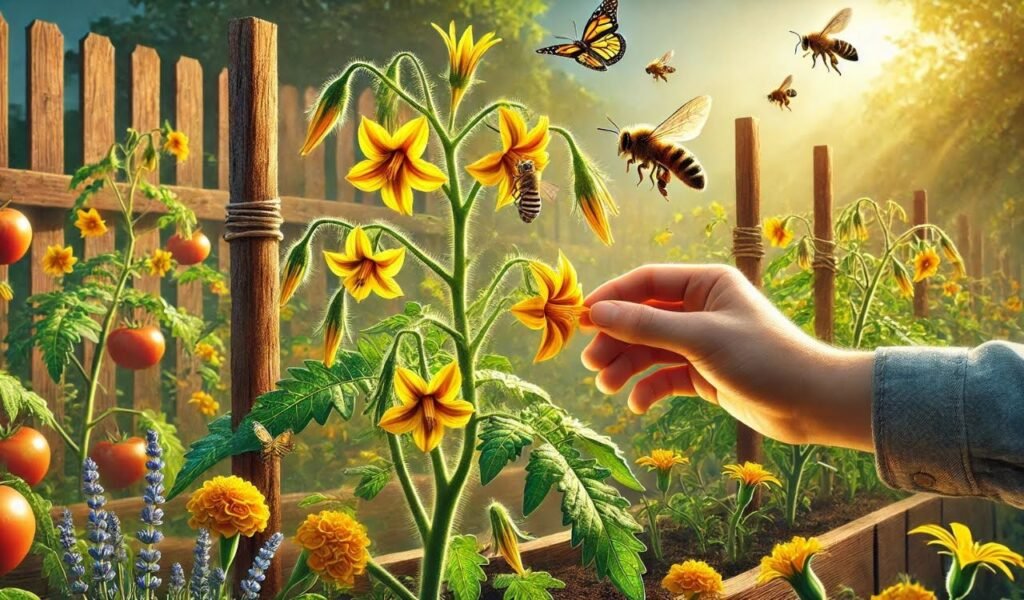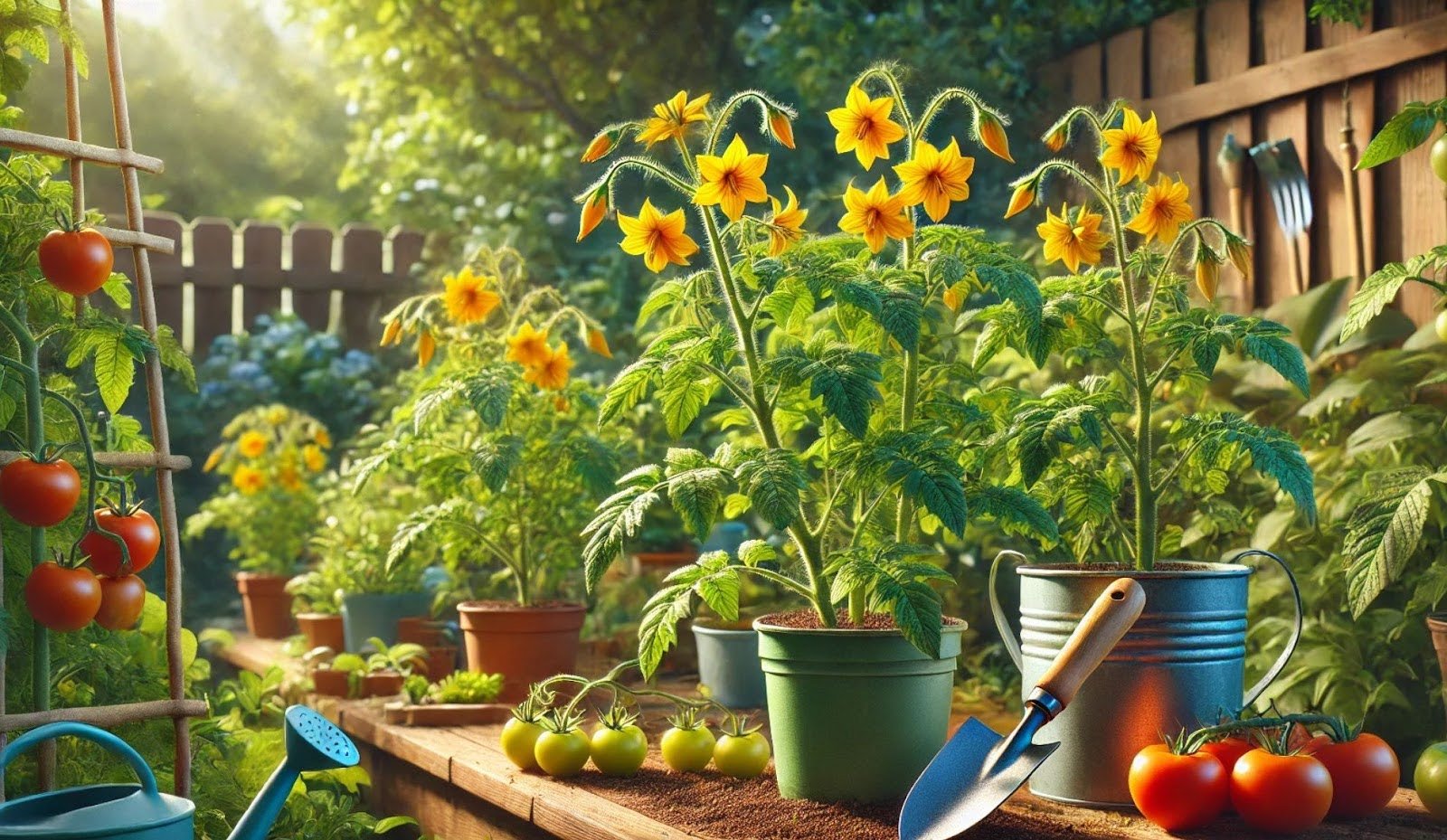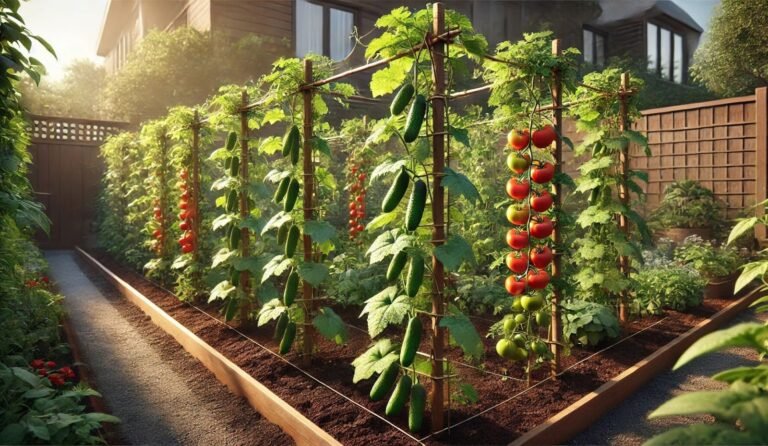How to Make Tomato Plants Produce More Flowers Naturally
How to make tomato plants produce more flowers? It’s the ultimate gardening question, right? Whether you’re aiming for a bumper harvest or just better-looking plants, the secret lies in a few simple tweaks. From proper pruning to feeding them the right nutrients, there’s a science to getting those blooms popping. Want to know what really works? Let’s dig in and transform your tomato game!
Basics of Tomato Flowering
What Triggers Flowering in Tomato Plants?
Flowering in tomato plants is influenced by several factors:
Plant Maturity: Tomato plants need to reach a certain maturity before flowering. This typically happens 5–7 weeks after planting.
Light Conditions: Tomatoes are sun-loving plants, requiring 6–8 hours of direct sunlight daily for optimal flowering.
Nutritional Balance: A balanced supply of nutrients, particularly phosphorus and potassium, promotes flowering.
The Role of Pollination in Fruit Production
Once flowers appear, pollination is essential for fruit to develop. Tomatoes are self-pollinating, but factors like wind, bees, or manual pollination improve success rates.
Common Challenges in Flowering
- Environmental Stress: Extreme temperatures can delay flowering.
- Excessive Nitrogen: Leads to lush foliage at the expense of flowers.
- Poor Pollination: Lack of pollinators in indoor settings or windy conditions.
Choosing the Right Tomato Variety

Best Tomato Varieties for Abundant Flowering
- Cherry Tomatoes: Known for prolific flowering and fruiting.
- San Marzano: Ideal for gardeners looking for consistent flowering.
- Big Boy and Better Boy: Popular hybrids with robust flowering potential.
Determinate vs. Indeterminate Tomatoes
Determinate Tomatoes: Flower and set fruit over a short period. Suitable for gardeners with limited space or a specific harvest schedule.
Indeterminate Tomatoes: Produce flowers and fruits continuously, ensuring prolonged harvests but requiring more care.
Importance of Heirloom and Hybrid Varieties
Heirloom Varieties: Offer unique flavors and adaptability but may have specific flowering requirements.
Hybrid Varieties: Engineered for disease resistance, consistent flowering, and higher yields.
Optimizing Growing Conditions for Tomato Plants
Soil Preparation
Use nutrient-rich, well-drained soil with an ideal pH range of 6.0–6.8. Incorporate compost or aged manure to enrich the soil with organic matter.
Light Requirements
Ensure tomato plants receive at least 6–8 hours of sunlight daily. For indoor setups, use grow lights designed for vegetable plants.
Temperature and Humidity
Ideal temperature: 70–85°F (21–29°C) during the day and above 55°F (13°C) at night. Maintain moderate humidity levels between 40–70% to prevent flower drop.
Providing Proper Nutrition
The Role of NPK in Tomato Flowering
- Nitrogen: Necessary for growth but excessive amounts can inhibit flowering.
- Phosphorus: Promotes strong root development and flowering.
- Potassium: Enhances flower and fruit quality.
The Best Fertilizers for Tomato Plants
- Granular Fertilizers: Use a balanced 10-10-10 or low-nitrogen formula like 5-10-10.
- Liquid Fertilizers: Ideal for quick absorption. Look for phosphorus-rich options.
Organic vs. Synthetic Fertilizers
- Organic: Compost, bone meal, and fish emulsion are sustainable choices.
- Synthetic: Fast-acting but requires careful application to prevent over-fertilization.
Foliar Sprays to Boost Flower Production
Use a diluted potassium nitrate or seaweed solution to stimulate flowering.
Pruning and Training Techniques
Pruning Suckers: Remove unnecessary shoots growing between the main stem and branches to redirect energy to flowering.
Trellising and Staking: Train plants to grow vertically for better light exposure and airflow.
Pinching Back Tips: Especially for indeterminate varieties, pinching encourages lateral growth and flowering.
Watering Strategies
Proper Watering Frequency and Techniques
Water deeply but infrequently to encourage deep root growth. Adjust frequency based on weather conditions: 1–2 inches of water weekly.
How Overwatering and Underwatering Affect Flowering
- Overwatering: Leads to root rot and nutrient leaching.
- Underwatering: Causes stress, leading to flower drop.
Mulching to Retain Soil Moisture
Apply organic mulch like straw or wood chips to regulate soil temperature and prevent water evaporation.
Encouraging Pollination

The Role of Bees and Other Pollinators
Bees and other pollinators play a vital role in tomato flowering by releasing pollen from the flowers and transferring it to other flowers, attracting pollinators by planting companion flowers like marigolds or lavender near tomato plants.
How to Hand-Pollinate Tomato Plants
To hand-pollinate tomato plants, gently tap the base of the flower with your finger or a small soft brush to release pollen, then use the same brush to transfer that pollen to the stigma (the sticky center) of the flower, repeating this process on multiple flowers on the plant; you can also try gently shaking the plant to naturally dislodge pollen.
Companion Planting to Attract Beneficial Insects
Basil, nasturtium, and borage are excellent companions that boost pollination while deterring pests.
Dealing with Stress Factors: How to make tomato plants produce more flowers?
Common Stresses That Inhibit Flowering
- Temperature Stress: Too hot or too cold can cause “blossom drop.”
- Pests and Diseases: Aphids, spider mites, and fungal diseases can harm flowering.
Preventive Measures to Protect Tomato Plants
Use insecticidal soap or neem oil for pest control. Rotate crops annually to reduce disease buildup. Grow your tomato plants in full sunlight (preferably 8 hours or more). Keep your plants’ soil steadily moist – don’t let the soil dry out, nor stay soaking wet. If you have very cool summers, consider growing your tomatoes inside a small hoop house for extra warmth.
How to Revive Stressed Plants for Better Flowering
Prune damaged areas, water consistently, and provide a balanced fertilizer to stimulate recovery.
Common Mistakes to Avoid
Over-Fertilizing with Nitrogen
This leads to excessive foliage at the expense of flowers.
Ignoring Pruning Needs
Unpruned plants waste energy on unnecessary growth, reducing flowering.
Neglecting Pollination in Indoor Setups
Indoor gardeners must hand-pollinate to compensate for the lack of natural pollinators.
FAQ
Why Isn’t My Tomato Plant Flowering?
Check for common issues like poor light, excessive nitrogen, or temperature stress.
How Long Does It Take for Tomatoes to Flower After Planting?
Most varieties start flowering 5–7 weeks after planting.
Can I Use Epsom Salt to Encourage Flowering?
Yes, Epsom salt provides magnesium, which aids in chlorophyll production and flowering.
Can pruning tomato plants increase flowering?
Yes, pruning is essential for encouraging flowering. By removing sucker shoots and unnecessary branches, the plant can focus its energy on producing flowers and fruits. Proper pruning also improves light penetration and airflow, which are critical for healthy flowering.
Can over-fertilizing prevent flowering?
Yes, over-fertilizing with nitrogen-rich fertilizers can lead to lush, green foliage while inhibiting flowering. To prevent this, use a low-nitrogen, high-phosphorus fertilizer specifically formulated for flowering plants.
Should I remove the first flowers on a tomato plant?
Removing the first set of flowers can help young plants focus on growth and root development, leading to healthier plants and a more productive flowering stage later. This technique is particularly useful for indeterminate varieties.
Final Thoughts
How to make tomato plants produce more flowers? Producing abundant tomato flowers is a rewarding process that requires attention to detail and care. By choosing the right variety, optimizing growing conditions, and following best practices in fertilization, watering, and pruning, you’ll enjoy a thriving tomato garden in no time. Start your gardening journey today with confidence and watch your tomato plants bloom!







